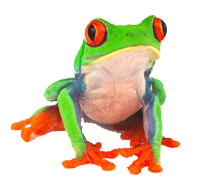Rio Grande de Tarcoles: "The Bridge of the Crocodiles"
Known also as Tarcoles, it is formed by the confluence of the water courses of the Virilla and the Grande River of San Ramón. The Greater Tarcoles, is one of the most extensive rivers of the country.
The river forms part of the habitat for the American Crocodile! The rivera at its mouth is home to numerous ducks and shorebirds. Among the many resident herons are boat billed and tiger heron. Other birds that can be observed are the caraway, the mangrove canary and the dwarf kingfisher.

Known for its abundance of American crocodiles, the Tarcoles River is said to have one of the largest populations in the world! Twenty five crocodiles per square kilometer! Often these large reptiles can be seen swimming by the river or sunbathing along the sandbanks or sediments. Other reptiles that live in the river are: caymans, cherepo and great iguanas. In addition, the river also hosts more than 50 species of migratory birds, native and coastal species, including a variety of herons, pink spatula, red and green barnacles. The flocks of red lapa parrots fly two by two from the bridge over the river to the mangrove where much of the population of the area usually sleep and seek their food.
This region is very popular with both domestic and foreign tourists, because of the large number of crocodiles and lizards that inhabit it and can be seen on the banks of the river.
Carara National Park: "River of Lizards"
The Carara National Park is located within the Turrubares and Garabito Cantons, in the province of Puntarenas. The main entrance is located 2 kilometers south of the Río Grande de Tárcoles Bridge.
The Carara National Park, which in Huetar indigenous language means "River of lizards", has the only transitional forest of the Central Pacific, which translates into diversity of flora and fauna, where dry and humid species of the forests converge. This region has a very diverse birdlife, where the Red Lapa (Ara macao) stands out. This species is in danger of extinction, being the second largest species of Psittacida in Costa Rica. Without doubt it is one of the main sites in the country for birdwatching!
With a fantastic variety of wildlife, visit this park to enjoy a great family trip. Monkeys, crocodiles, armadillos, peccaries, waterfowl, opossums, lazy bears, boas, margay felines, jaguars, whitetail deer and ozelotes can be found here as well as reptiles and amphibians. It is the first national park to have a trail of universal access where the visitor can experience the inside of the forest. Meet endemic species such as the Cafecillo (Erythrochiton gymnanthus), large trees and see the relationship exists between some of the species.
Travel in Canopy by the Pacific
The Canopy tour and cable car in the tropical rainforest of Playa Jacó offers you the best of both activities, allowing beginners an exciting way to experience a canopy tour in Costa Rica. At the same time experience an interesting and relaxing cable car ride in between the tropical forests. This unique cable car makes this tour a great activity.
This outdoor cable car takes you through the heights of the forest where lush flora, small waterfalls, small hidden rivers and an exciting wildlife like red lapas and white face monkeys can be found.
Once at the top of the mountain, they begin their descent towards a series of fifteen cables and elevated platforms. Not only are there incredible views, but you also experience the feeling of adventure as you ride the cable car through the area!
Safety is the biggest concern of all government-certified professional guides. All equipment is checked daily.

